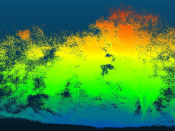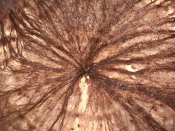Por Diogo Prino Godinho (Evolutionary Ecology - cE3c).
Competitive interactions between phylogenetically close species often lead to exclusion of one of them, or to niche partitioning. Still, coexistence may be possible if the competing species have different strategies to exploit the same resource. Here, we aim to shed light on this topic by studying the competitive interactions of herbivorous spider mites sharing the same host plant, tomato (Solanum lycopersicum): the generalist Tetranychus urticae and T. evansi, specialized on Solanaceae plants. Laboratory tests have shown that T. evansi excludes T. urticae when co-infesting tomato plants. Still, field records document both species coexisting in the same region and even in the same tomato plantations.
Here, we show that the two species share the same micro-environmental fundamental niche. Indeed, they both prefer young to old leaves. Also, tomato plants accumulate cadmium, which is detrimental to herbivores, including spider mites. However, we found that both species have the highest performance at the same, intermediate, cadmium concentration. This is expected to lead to more local competition. In line with this, we found that, when colonizing plants infested with heterospecifics, T. urticae avoided competition by moving to strata without competitors. T. evansi, in contrast, did not avoid a specific stratum but distributed more evenly on plants occupied by the heterospecifics, potentially monopolizing all the resources. T. urticae also avoided plants with competitors, but only in absence of cadmium in the environment. Together, these results contribute to a better understanding of the outcome of competition in this system.










